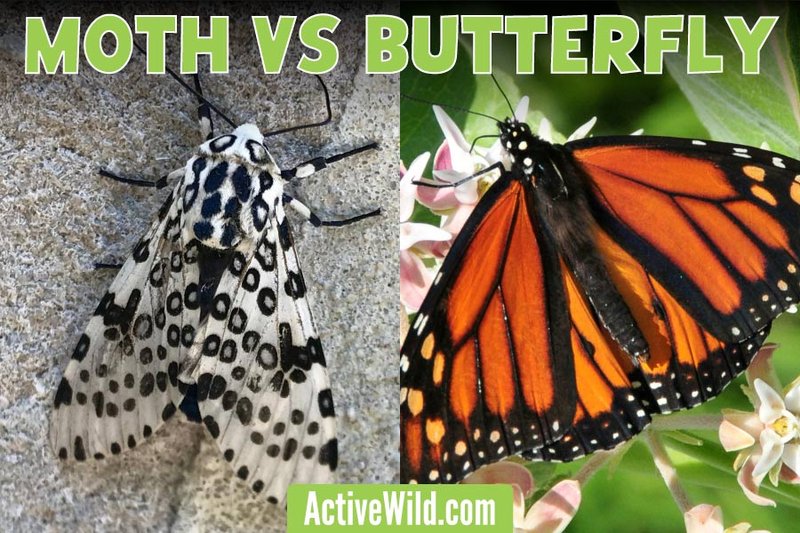
Imagine sitting in a sunlit meadow, surrounded by wildflowers. Suddenly, a butterfly flits by, its wings glistening in the sunlight. Then, you spot some moths in the shadows, and maybe even a few bees buzzing around. While they all belong to the insect family, they have distinct characteristics that set them apart. So, grab your favorite drink, and let’s break down the differences and similarities among such mesmerizing creatures.
Understanding Butterflies
Butterflies are part of the order Lepidoptera, which they share with moths. One of the most fascinating things about butterflies is their life cycle. They undergo a complete metamorphosis, meaning they start as eggs, turn into caterpillars (or larvae), then pupate into chrysalises, and finally emerge as adult butterflies. This transformation is quite an adventure!
You might be wondering, what makes butterflies different from their relatives? Well, for starters, butterflies are usually diurnal, meaning they are active during the day. They also have slender bodies, and their wings are often vibrant and colorful. The bright colors serve not only to attract mates but also as a warning to predators about their potential toxicity.
Another interesting aspect of butterflies is their diet. Most adult butterflies feed on nectar from flowers. Their long proboscis acts like a straw, allowing them to sip on the sweet liquid. This feeding not only nourishes them but also aids in pollination, helping plants reproduce.
Comparing Moths: Their Shadowy Cousins
Now let’s discuss moths, those often-overlooked relatives of butterflies. While moths and butterflies share a lot of similarities, there are key differences. For one, moths are generally nocturnal, which means they are more active at night. When you spot a moth fluttering around a porch light, it’s doing what it does best!
Moths often have thicker bodies and more muted colors than butterflies. This makes them better suited to blend into their surroundings, helping them avoid predators in the dark. While butterflies flaunt bright colors, moths prefer earthy tones, allowing them to hide away more easily.
The feeding habits of moths can also be quite different. Many moths enjoy a diet rich in fabric, which can be a nuisance for clothes or blankets stored away. Some species don’t even eat as adults, living off the energy they gathered during their caterpillar stage.
The Life Cycle of Moths vs. Butterflies
Both butterflies and moths undergo metamorphosis, but there are a few distinctions in their processes. As mentioned earlier, both start as eggs and transform into larvae (caterpillars for butterflies and caterpillars or grubs for moths).
Butterflies usually form a chrysalis, a smooth, hard shell where they undergo their transformation. On the other hand, moths often create a cocoon that can be fuzzy or silky, adding an extra layer of protection. When it’s time to emerge, butterflies break out of their chrysalises, while moths typically crawl out of their cocoons.
The duration of these life cycles can vary widely. Generally, butterflies take about 10 days to several weeks to complete their life cycle, while moths can take several weeks to several months, depending on the species and environmental conditions.
Bees: The Hardworking Pollinators
Now, let’s shift our focus to another group of insects: bees. Although they are quite different from butterflies and moths, they share some critical roles in our ecosystem, especially in pollination. Bees, like butterflies, are essential for helping flowers reproduce, but their approach is a bit more industrious.
Bees have specialized structures called pollen baskets on their hind legs, allowing them to collect and carry pollen back to their hives. While butterflies sip nectar, bees actively gather pollen and nectar, which they use to feed their colonies. Some butterflies might visit flowers for a snack, but bees treat flower visits like a job, working tirelessly to ensure their colony thrives.
Furthermore, the social structure of bees adds another layer of interest. Many bees live in complex colonies with queens, workers, and drones, whereas butterflies generally lead solitary lives. Their teamwork is crucial, especially for species like honeybees, which play an essential role in agriculture and food production.
Flies: The Quick-Flying Insects
Although flies may seem very different at first glance, they’re worth mentioning in this comparison. Flies belong to the order Diptera, which means “two wings,” and they can often be seen buzzing around food (like at summer picnics!). Unlike butterflies, flies have a more straightforward life cycle that also includes egg, larva, and pupa stages.
Houseflies are particularly interesting because they are often found in urban areas, enjoying the spoils of human leftovers. Their life cycle is swift; they can go from egg to adult in about 10 days, which means their populations can grow quickly!
Flies tend to be less graceful than butterflies; they can appear erratic in flight and lack the striking colors that butterflies proudly display. However, they do play a vital role in breaking down organic material, contributing to the ecosystem in essential ways.
Ants: The Tiny Powerhouses
Finally, let’s mention ants, even though they are quite different from butterflies. Ants are social insects that live in large colonies. Like bees, they have a defined social structure, consisting of queens, workers, and soldiers. Although you might not associate ants with the same beauty as butterflies, their industrious nature is fascinating.
Ants communicate using pheromones—chemical signals that help them convey messages to each other. They work seamlessly together, whether they’re building their nests, foraging for food, or caring for their young. Often overlooked, ants play a significant role in the ecological balance. They aerate the soil and contribute to nutrient recycling, making them unsung heroes in nature.
While they share the ground with butterflies, their vibrant wings and colorful patterns are absent. But their unique characteristics make them an essential part of the insect world.
Why These Comparisons Matter
Understanding the differences between butterflies, moths, bees, flies, and ants can deepen our appreciation for the natural world. Each insect plays a unique role in maintaining our environment. For example, while butterflies are beautiful pollinators, bees are essential for crop production. By recognizing these roles, we can become better stewards of our environment, protecting the habitats that these creatures rely on.
So, the next time you spot a butterfly in your garden, remember that it’s not just a pretty sight. It’s part of a larger community of insects, each contributing uniquely to the tapestry of life around us.
In summary, butterflies may be the colorful stars of the insect world, but their cousins like moths, bees, flies, and ants play vital roles that are just as important. Embracing this knowledge can help us foster a greater love for nature and inspire us to protect these creatures for future generations.
As you encounter these amazing insects, let their stories remind you of the beauty and diversity life has to offer. Whether fluttering gracefully in the air or working diligently on the ground, they all have a place in the ecosystem, and that’s something worth celebrating!

